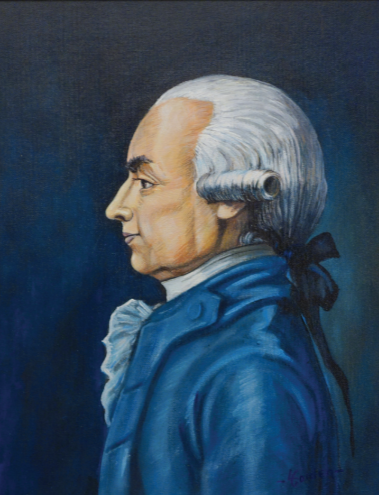3.5: J. Hector St. John de Crevecoeur (1735–1813)
- Page ID
- 57447
Crevecoeur was born MichelGuillaume Jean de Crevecoeur in Caen, Normandy. Only after he was in America did he change his name to J. Hector St. John de Crevecoeur. He came to North America in 1755, enlisting in the Canadian militia during the French and Indian War; he served as a surveyor and cartographer. After leaving the military, he traveled through New York, Pennsylvania, and the southern colonies, making a living as a surveyor and trader with Native Americans.

Image \(\PageIndex{1}\): J. Hector St. John de Crèvecœur
In 1769, he bought farmland in Orange County, New York, married, and raised a family. The American Revolution disrupted this idyllic pastoral life. A Tory sympathizer, Crevecoeur left for France ostensibly to recover family lands, and returned to post-war America as French consul for New York, New Jersey, and Connecticut. During his absence, his wife had died, his farm was burned in a Native American raid, and his children relocated with strangers. He continued for some years as a successful diplomat before returning to France in 1780. Two years later, he published his Letters from an American Farmer, recording his observations of America, from Pennsylvania to Charles Town and the western frontier. Using the persona of Farmer James—who hailed from a farm not in Orange County, New York but near Carlisle, Pennsylvania—and suppressing his Tory sympathies, Crevecoeur praised the agrarian life. He noted extensive fields and decent houses in a land that only one hundred years previously had been all wilderness. He expressed optimism for continued positive change through humanitarian action yet also noted the cruelty of slavery in the southern states and lawless behaviors in the western frontier. His book documented the transformation of colonial America to the American Republic. He asked the important question, “What is an American?” And he defined one of the shaping characteristics of the future nature: as a melting pot of peoples and cultures.
The book’s topicality contributed to its remarkable success. Its success certainly helped popularize the idea of America as a classless society, rich with opportunity. After 1790, Crevecoeur himself never returned to America but lived the remainder of his life in France.

